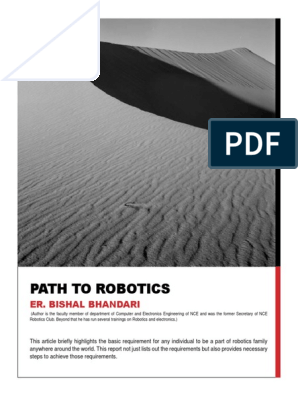0% found this document useful (0 votes)
90 views8 pagesRobotics Design Process
The document outlines the robotics design process, which includes defining the problem, researching and designing, creating a prototype, building the robot, programming and testing, and evaluating the robot. Each stage emphasizes the importance of understanding the problem, gathering information, and ensuring that the design meets specified requirements. Additionally, it discusses trajectory planning and constraints for continuous motion in robotic systems.
Uploaded by
Abdullah Al OmarCopyright
© © All Rights Reserved
We take content rights seriously. If you suspect this is your content, claim it here.
Available Formats
Download as PDF, TXT or read online on Scribd
0% found this document useful (0 votes)
90 views8 pagesRobotics Design Process
The document outlines the robotics design process, which includes defining the problem, researching and designing, creating a prototype, building the robot, programming and testing, and evaluating the robot. Each stage emphasizes the importance of understanding the problem, gathering information, and ensuring that the design meets specified requirements. Additionally, it discusses trajectory planning and constraints for continuous motion in robotic systems.
Uploaded by
Abdullah Al OmarCopyright
© © All Rights Reserved
We take content rights seriously. If you suspect this is your content, claim it here.
Available Formats
Download as PDF, TXT or read online on Scribd
/ 8


































































































